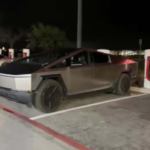Energy News Beat
Almost everyone knows that the range estimates advertised by automakers should be taken with a grain of salt, and I’m talking about both electric and combustion vehicles.
That said, some EVs manage to beat range estimates in real-world testing done by publications like InsideEVs, Edmunds, and Consumer Reports, which can alleviate some of the range anxiety that might be experienced by newcomers in the electric vehicle world.
Get Fully Charged
Range estimates are a tricky subject
Many, many electric cars have real-world range that differs from their EPA estimates. Some perform better, others perform worse. Tesla has sometimes been accused of overstating its range estimates.
Tesla isn’t on those lists, though. In fact, all of the EVs made by the American company have made headlines over the years because of their inability to match their advertised range in real-world conditions. And now, the brand-new Tesla Cybertruck joins its stablemates by driving less on a full charge than what Tesla is touting on its website—at least according to one test.
In the five-hour-long live stream (yes, it’s that long) embedded here, InsideEVs alum Kyle Conner, who runs the Out of Spec group of YouTube channels, got his hands on a Foundation Series dual-motor Cybertruck riding on 20-inch wheels wrapped in 35-inch all-terrain tires.
The topic of the video is simple: see how far the EV can drive on a full battery. The test was conducted at night in Texas, at an ambient temperature of about 45 degrees Fahrenheit (7 degrees Celsius), and a relatively constant speed of 70 miles per hour (112 kilometers per hour.)
The post Tesla Cybertruck Falls 20% Short Of Its Advertised Range In Real-World Test appeared first on Energy News Beat.








